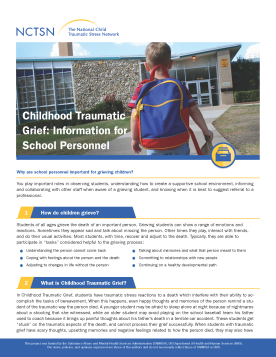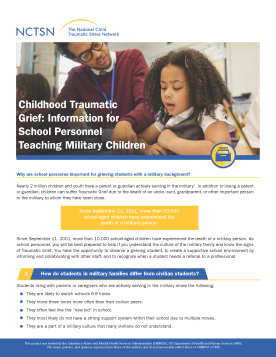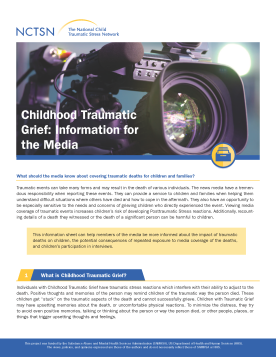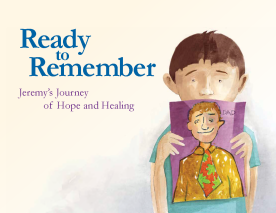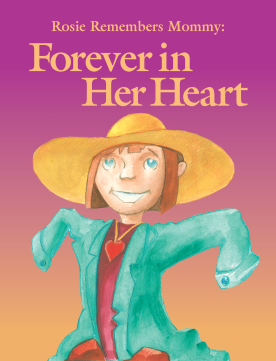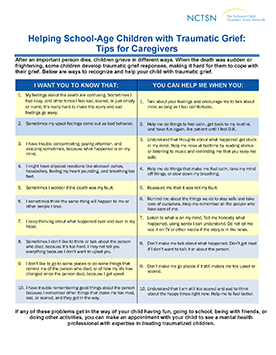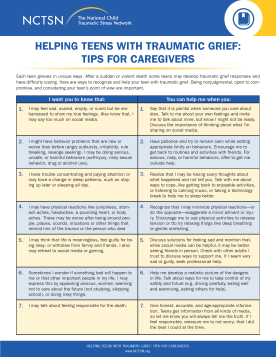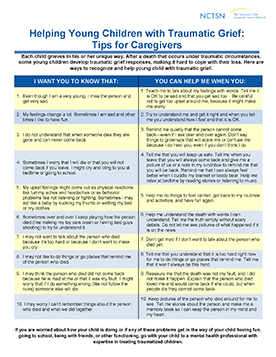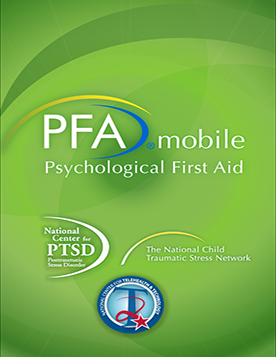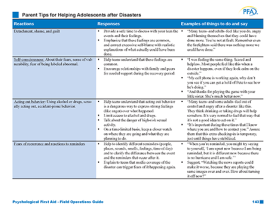Winter storms are bad weather that generates precipitation at low temperatures such as snow, sleet, and freezing rain. Winter storms can range from light snow flurries to a blizzard, which is a long-lasting storm with very strong winds and intense snowfall. Because strong winds can carry heat away from the body, it may often feel colder outside during a storm than the temperature would indicate, called the wind chill. Risks due to winter storms can include traffic accidents on icy roads, heart attacks from shoveling snow, or hypothermia from prolonged exposure to the cold.
Being prepared beforehand is the best way to help children and family members stay safe during a winter storm. To improve their preparedness, families should:
- Be informed about how to access updated weather information. Families should know what winter storm conditions are expected in their area and which official radio stations, websites, and/or social media will provide weather updates and alerts. They should also learn how schools and their employers will provide notifications of early closings or cancellations. Help families to understand the different winter storm alerts:
- Winter Weather Advisory: An accumulation of snow, freezing rain, freezing drizzle, and sleet is expected but won’t reach watch or warning level criteria. The storm will likely cause inconvenience, requiring heightened awareness and the need to exercise caution.
- Winter Storm Watch: The possibility of a blizzard, heavy snow, heavy freezing rain, or heavy sleet exists for the watch area. A winter storm watch is usually issued 12 to 48 hours before the event, and people in the watch area should start preparedness activities such as shopping for groceries and other supplies.
- Winter Storm Warning: Hazardous winter weather in the form of heavy snow, heavy freezing rain, or heavy sleet is expected in the warning area. A winter storm warning is usually issued 12 to 24 hours before the event.
- Blizzard Warning: When a storm has sustained or gusty winds of 35 mph or more, and snow or blowing snow decreases visibility to ¼ mile or less. These conditions will last for at least 3 hours and families should stay indoors.
- Frost/Freeze Warning: Issued when below-freezing temperatures are expected.
- Wind Chill Advisory: Issued when the wind chill temperature is forecast to be between -15˚F to -24˚F.
- Wind Chill Warning: Issued when the wind chill temperature is forecast to be -25˚F or lower.
- Have working smoke and carbon monoxide detectors. Storms can cause power outages and increase the risk of house fires and carbon monoxide poisoning when people improperly use alternate sources for heat and cooking.
- Know how to stay warm in the event of a power outage. Encourage families to have a back-up heat source, such as a wood-burning fireplace or stove. It is never safe to use a generator, grill, camp stove, or other gasoline/propane/charcoal-burning device indoors. Families that need assistance staying warm in the event of a power outage should locate a person nearby with whom they can stay or a community shelter or “warming center.” Ensure that families have warm coats, gloves or mittens, hats, warm clothing, and extra blankets to help stay warm.
- Assemble an emergency supply kit. Families should have access to enough water, food, and other emergency supplies. Families should also include a radio with batteries to get weather updates and supplies for pets. Children can also pack their own kits and include their favorite toys. Review the family preparedness plan for additional guidance.
- Keep vehicles prepared for winter weather. Families should keep vehicles’ gas tanks at least half full throughout the winter to prevent the fuel line from freezing. It is best to keep a winter survival kit in their vehicle, including items such as a shovel, blankets, and windshield scraper.
- Plan for children’s needs. Families should give children factual information about winter storms in simple terms. Parents can include children in preparedness activities. The mobile app Help Kids Cope provides information on how to talk with children of different developmental levels.
Knowing what to do during a winter storm can help families stay safe. Consider the following:
During a winter storm watch, families should:
- Monitor the local weather forecast for winter storm alerts and current updates. Make sure phones can receive Wireless Emergency Alerts (WEA) and stay aware of changing weather conditions. Temperatures may drop rapidly, winds may increase, or snow may begin to fall at heavy rates.
- Monitor the school district website for school closures or other important updates.
- Prepare their home for the winter storm. Families should stock their home with enough non-perishable food and water for 3 days (may need more depending on the length of the storm). Have them also stock up on supplies for potential power outages, including batteries, flashlights, and firewood. It is also helpful to keep mobile devices fully charged.
During a winter storm warning, families should:
- Check the temperature and wind chill before sending children out to play. Children should stay indoors if the wind chill is 10˚F or lower.
- Keep children warm and protected when playing outside. Children should have a snack before going out to give their bodies energy in the cold weather. Children also need to wear sunscreen, as snow can reflect a significant percent of the sun’s ultraviolet rays. Parents or caregivers should dress children warmly in layers of clothes. Older babies and young children need one more layer of clothing than an adult would wear. Wool and other fabrics are preferable to cotton. Waterproof pants and jackets are great top layers, and children should also wear warm socks, boots, mittens, and a hat. Scarves and face masks can help minimize skin exposure. Children should come inside when they’re cold, start to shiver, or their teeth chatter.
- Avoid unnecessary trips and take precautions when traveling. Encourage families to keep their cell phones charged and with them at all times, and let someone know where they are going, how they will get there, and when they expect to arrive. If their car gets stuck, families should stay with it and wait for help unless help is visible within 100 yards.
- Take steps to stay warm in the event of a power outage. Families should always follow manufacturer’s instructions when using a generator. A generator should always be used outside and away from windows and doors. To keep warm, families should wear several layers of lightweight, warm clothing and hats, mittens, and scarves. To retain heat in the home, seal off unused rooms by stuffing towels in the cracks under the doors and cover the windows with blankets or sheets at night. If without heat for a long time or feeling unsafe, have families go to a friend’s or family’s house or a community warming center/shelter.
- Keep pets inside during cold winter weather.
After a winter storm, most families will recover and be able to return to their normal routines rather quickly. Most children will demonstrate resilience after a winter storm, however, some children may react differently if they were injured in a car accident or experienced the loss of a loved one or pet and may need additional grief support to help them adjust.
Below are resources to support children, families, and communities recover after a severe winter storm.
